The Everest Base Camp Trek Itinerary are from 12-21 days. This includes time for acclimatization and rest days, as well as the time it takes to travel to and from Kathmandu and Lukla, the starting point of the trek. The itinerary can be shortened to 10 days if you are pressed for time but it will not be the best option for acclimatization and the risk of altitude sickness will be higher.
It’s important to note that trekking in the high altitude can be physically and mentally demanding, so it’s essential to be in good shape and well-prepared. It’s also good to keep in mind that the itinerary can vary depending on the route you choose and the trekking company you go with.
The Everest Base Camp Trek is one of Nepal’s most famous trekking journeys, encapsulating the natural beauty of Nepal’s Himalayas and the verdant rural life of the ethnic Sherpa people.
Every year, thousands of tourists from around the world visit the country to experience the sight of the world’s tallest mountain peak. The Everest region offers visitors many beautiful faunal, floral, cultural, and religious opulence. Home of the ethnic Sherpa people, the Everest region is a cornucopia of unique treasures worth traveling to at least once in life.
Here We have listed below number of Everest base camp trek itinerary
Short Everest Base Camp Trek – 10 Days Itinerary
The 10 Days Everest Base Camp Rapid Trek is a short trek that takes you directly to Kalapatthar (5545m) and the Everest Base Camp without acclimatization. Thus, prior hiking expertise is required for the excursion.
As the name suggests, it is a quick excursion through the mountain villages of the region. Since acclimatization is not included, it is suitable only for experienced trekkers with a vast amount of previous trekking experience on high mountain altitudes.
The journey, like most in the Everest region, begins from Lukla. The Tenzing Hilary Airport, located 45 minutes from Kathmandu, is the only airport in Khumbu. The airport provides a wonderful landing experience and is named after legendary climbers- Sir Edmund Hillary and Tenzing Norgay Sherpa, the first people to reach the top of Mount Everest.
Since there is no road access in the Khumbu valley, the airport is predominantly used for passenger flights and freight transportation to Lukla and other villages in the north. Helicopters and light planes only travel to the airport since it is hard to fly large planes in the area’s complicated geography.
Similarly, the trip proceeds past Namche Bazaar and into the Khumbu Region, where you will taste the Sherpa populace’s Tibetan-influenced way of existence. From Lukla, the Trek continues to Phakding and then to Namche Bazaar. Usually, Namche is where most trekkers take a day or two off trekking and spend the day wandering the town to let their bodies adjust to the high-altitude environment.
From there, the Trek continues to Tengboche and Dingboche, finally reaching the resting point of Lobuche and Gorekshep, with the final destination being the base cap itself. After reaching the base camp, trekkers can divert towards Kalapatthar for a panoramic view of the mountains and a rapid descent back down the valley towards Pheriche and Lukla.
Hike to Base camp Return by Helicopter -11 Days Itinerary
Besides trekking, heli flights are another way to experience the majesty of the mountains. Helicopter flights in Nepal, although comparatively expensive, are a great way to explore and enjoy the silver Himalayas of northern Nepal in a relatively short amount of time.
It is also perfect for people who suffer from altitude sickness since heli flights usually do not require acclimatization contingencies. The 11 days Everest Base Camp Trek with helicopter return is one of the itineraries for people who want to experience the mountain via trekking and flight.
Similarly, the trip is excellent for individuals who don’t have lengthy vacations and don’t want to walk back to Lukla after exploring the Everest Base Camp and Kalapatthar. With a climb to Kalapatthar, a trekker’s maximum elevation is 5,515 meters.
You would, therefore, likely be returning to Kathmandu by helicopter after the event, which is exceptional even by Everest’s standards. With this itinerary, you can concentrate on your vacation because it saves you time and effort.
The journey follows the same path, beginning with a flight to Lukla and coruscating along the many ethnic villages of the valley, like Phakding, Lobuche, Namche, Tengboche, and Gorekshep. The helicopter flight begins at Kalapatthar, and you return to the capital, flying over the mountains, gorgeous foothills, and the emerald valley in a short amount of time (about 45 minutes).
The helicopter trip allows you to see the land topography of the area from a bird’s eye view, which is surrounded by the atmosphere of energizing mountain air, the mixture of amethyst and teal terrain, and the assembly of turquoise pinnacles.
The Khumbu region is home to various other sites, and helicopter excursions can show you the Khumbu Glacier, the blue Gokyo Lakes, and the Everest region’s surrounding peaks, including Mount Ama Dablam, Mount Lhotse, Mount Nuptse, and Mount Cho Oyu.
Everest Base camp trek from Kathmandu -12 Days Itinerary
The 12 Days Everest Base Camp Trek itinerary is a standard trekking journey, It is suited for first-time trekkers and is a streamlined trekking journey that most trekkers follow. This itinerary Has also two days reserved as acclimatization days.The first acclimation day is reserved at Namche Bazaar and another at Dingboche. It begins with a flight from Kathmandu to Lukla and the main trekking trail that leads towards Phakding and then to Namche, where the first acclimation day is spent.
Namche is a well-known attraction of the Everest Base Camp Trek. It is a well-known alpine town from where you can enjoy stunning views of peaks like the Kongdi RI, the Thamserku, and Everest. Its spectacular amphitheater-like geography gives the town, which is well known for being Nepal’s entrance to the Himalayas, an otherworldly atmosphere of Himalayan tranquillity.
The majority of hikers stay in Namche for acclimatization. It is a stunning location that contributes significantly to the expansion of Khumbu’s tourism industry. In reality, Namche Bazaar served as an important meeting place for Nepali and Tibetan traders in the past, when traders traded goods like salt, dried meat, and textiles. Today, it is a bustling Himalayan town and the main point of stay for trekkers of the Everest region.
The next acclimation day takes place in Dingboche. Trekkers usually take a little climb to a neighboring hill near Dingboche, called the Nagarjun Hill, to stay energized and prepared for the remainder of the adventure. It rises steeply from Dingboche, reaching 5,100 meters, and gives stunning views of Ama Dablam, Lobuche, Lhotse, Nuptse, Cholatse, and Kangtega.
Most of Dingboche comprises lodges and camping grounds, and the community mainly depends on tourism. To the village’s immediate east, the Imja River slices the valley with its white Himalayan waters. Likewise, a helicopter landing area is just west of the Imja River.
Moreover, one of Dingboche’s distinguishing features is the mile-long stone wall that spans the Imja Valley. The wall is constructed with stones taken out of the ground to plough the soil, is made with stacked stone rubble, and is built to protect the village’s crops from the sweeping Himalayan gale.
Everest Base camp Trek -15 Days Itinerary- Including Arrival, departure Days
The 15 Days Everest Base Camp Trek Itinerary is perfect for people who do not have any previous trekking experience at all. The itinerary for this journey follows the same path as others mentioned above, but the 15 Days schedule allows for a two-day rest for acclimation at Namche Bazaar and Dingboche. With ample time to adjust to the mountain altitude, the 15 days itinerary is perfect for first-time trekkers and elders.
The relatively relaxed pace of the journey allows trekkers to be fully immersed in the Sherpa culture of the mountains. The Nepalese Khumbu area is a shelter for Sherpas who live in close quarters. Most people around the globe are in awe of and inspired by the famed Sherpa culture of Mount Everest.
As a result, the Everest Base Camp Trek offers a fantastic chance to experience the renowned customs and culture of the Sherpa people up close. The Sherpa people are renowned worldwide for their almost superhuman climbing abilities. They are kind and polite folks who give the hiking adventure a hint of exoticism. While exploring the area, most trekkers usually nearly have a Sherpa guide or assistant.Similarly, the Everest Base Camp Trek is both an exciting and spiritual adventure. While hiking, it’s possible to come across a lot of little chortens and Gumbas that have colorful prayer flags on them. It’s not uncommon to see Mani stone walls with prayers engraved.
Tengboche Monastery is arguably the most well-known and beloved of the Trek’s numerous spiritual allegories. Tengboche hamlet is home to this stunning Buddhist monastery. Trekkers frequently stop at the monastery to ask the resident Buddhist monks for their prayers for a safe trek.
Everest base Camp Luxury Trip -16 Days Itinerary
For those who want to climb Everest in the utmost luxury and comfort, the Everest Base Camp Luxury Trek is ideal, following the 16-day itinerary. The most opulent resort and guest houses in the trekking zone and the five-star hotel in Kathmandu offer elegant and comfortable lodging.
While the luxury Everest Base Camp Lodge Trek route follows the usual EBC path that every Everest aspirant follows, trekkers can enjoy an entirely different luxury experience from the beginning of the Trek.
This luxury trek to Everest Base Camp includes accommodations in a tea house or resort with double beds and, if available, private bathrooms. A hot shower, hot water bag, sleeping bag, hiking supplies, and a flexible food policy are also usually available.
Additionally, trekkers are accompanied by knowledgeable and medically certified trekking leaders, assistance guides, and all the necessary safety equipment, including an oxygen cylinder and a first aid kit. Besides the natural beauty, the cultural luxury, and the Himalayan scenery, the main selling point of the 16 days itinerary is its luxury amenities.
Everest Base Camp Classic Trek -17 Days Itinerary
A great alternative path to the base camp of the most significant mountain peak in the world is the 17 Days Everest Base Camp Trek via Phaplu. The route offers a beautiful new set of remote towns and far-off communities that deviates from the well-traveled trail to the base camp through Lukla, making it ideal for trekkers searching for something new when trekking on Everest. It is a lovely tour that allows you to discover new parts of Everest that would not otherwise be accessible.
Trekkers get breathtaking vistas of the mountain peaks at every bend in the walking path. You will also have an outstanding experience paired with the ethnic Sherpa culture of the little settlements tucked into the valleys of rivers.
The trail lets you discover the Takshindo Gompa as you stroll through slender valleys and cross the area’s roiling white rivers. The serene beauty of the terrace farms and nearby meadows situated beneath the mountain peaks cast a shadow over them is simply unmatched. It is a beautiful hiking adventure and a fantastic substitute for the Everest base camp.
EBC Trek with Gokyo Valley -18 Days Itinerary
The 18 Days EBC Trek to Gokyo Lake via the Cho La Pass is a more advanced trekking journey that takes you to the holy Gokyo Lake and the stunning Cho La Mountain Pass. One of Nepal’s most breathtaking trekking routes, the Trek is located in the heart of the Khumbu area. Trekkers on this path are rewarded with breathtaking vistas and opportunities to interact with local cultures because it is less congested and more straightforward than the route to the Base Camp.
If you are not up for the typical Everest Base Camp Trek, then the 18 Days itinerary is a fantastic alternative. It blends the best elements of the Khumbu region’s natural and cultural features. Your experience will be enhanced by the stunning mountains, shimmering rivers, high valleys, cold glaciers, clear lakes, and rustic Sherpa way of life. The initial part of the journey follows the same route as the other EBC treks, but it diverts from Namche Bazaar.
Namche to Dole
The routes are easy to begin with before climbing steeply out of the valley via rhododendron forests. As the elevation rises, the rhododendron forests give place to aromatic juniper stands and giant conifers. This hike is charming in the springtime when the rhododendrons are in blossom. Many Kharkas, summer towns used by Sherpas to transport yak herds to graze in these high pastures, may be seen along the paths. The road travels via Tongba (3950m) and Gyele (3960m) before arriving at Dole, where there aren’t many hotels. Throughout the day, Khumbila and Tawache (6542m) offer stunning views.
Dole to Maccherma
The route from Dole ascends to Lambara at 4220 metres and Luza at (4360m). The trail climbs through junipers and scrub and is generally rather steep. Every time there is a flat area and even the tiniest indication of water, there are Kharkas. The routes go up the valley’s side and through sandstone spurs to Machherma at a high altitude (4410m). The Yeti attacked a Sherpa lady and killed three yaks near Machhermo in 1974 (allegedly).
Maccherma to Gokyo Valley
Trekkers ascend a ridge for a fantastic view of the valley, Kantega, and the mountains, Cho-Oyu (8201m). Beyond the crest, the valley opens as the path travels through Pangka at 4390 meters above sea level and then drops to the riverbed before beginning the ascent to the Ngozumpa Glacier’s terminal moraine. Families of Brainy green ducks live in the first tiny Lake at (4650m), which is reached after a challenging ascent up the moraine and switchbacking across the stream.
Gokyo is where trekkers usually reserve a day to acclimatize as well. Early risers ascend to Gokyo-Ri for a panoramic view of the Mahalangur Himalayan range; the ascent takes about two hours. From the peak, visitors may see Cho-Oyu, Gyachung Kang, Everest, Lhotse, Makalu, Cholatse, and Tawache, as well as the biggest glacier in Nepal, Ngozumpa.
Gokyo to Cho La Pass
The exhilarating Cho La pass, which connects several noteworthy sights, is located in the Everest area and rises to a height of 5420 metres (17780 feet). The route runs between the serene, azure Gokyo Lakes in the west and the magnificent Everest Base Camp in the east. It is one of three high passes in the Everest area, providing a fantastic view of mountains like Cho Oyu, Mount Everest, and many more. It is one of the Everest region’s three most arduous mountain crossings.
Because it is the tallest of the three, the ascent, depending on the season, might be challenging. The ascent is difficult in the winter and early spring due to snow or ice accumulations, but with the right tools, one may easily traverse the pass. Then, finally, it’s back to Lobuche from Dzongla. After crossing the Cho La Pass, the trekking trail adjoins back to the typical trekking trail of the regular EBC Trek.
Everest base camp Kalapathar – 19 Days Itinerary
The Everest Base Camp with Island Peak expedition combines the hike to Mount Everest’s base camp with a climb of Island Peak, two incredibly spectacular experiences. It is most suitable for those seeking an adventure that is more exhilarating than typical hiking expeditions.
It features several highlights and is set in Nepal’s stunning Khumbu area. The 19 Days itinerary bundle includes the region’s best qualities and characteristics.
Beginning with a quick flight to Lukla, the Everest Base Camp with Island Peak trek passes through several ethnic Sherpa communities, including Phakding, Namche Bazaar, and Tengboche. Trekkers can enjoy the expansive views of the whole Mount Everest massif by hiking to the lookout point at Kalapatthar.
Highlights include visiting the Everest View Hotel, where you may have a cup of buttered tea while gazing out at the azure Himalayas. The view of famous mountain peaks, including the Ama Dablam, the Kongdi RI, the Thamserku, the Lhotse, the Nuptse, and Mount Everest from the Tengboche monastery are also spectacular.
Eventually, after reaching base camp, the trip includes an ascent to Island Peak’s top. The peak seems like an island since glaciers surround it, and the views of the Himalayas from the summit are breathtaking!
As you ascend the summit under the guidance of our finest Sherpas and guides, you can take in the expansive snowy ridges and ice fields and utilize climbing tools like karabiners and crampons as you slowly make your way to the mountain’s summit.
Everest Three High Pass – 20 Days Itinerary
Trekkers can take on the exhilarating 20 Days Everest Three High Passes Trek itinerary and experience the best of the Himalayas. This Trek extends the traditional Everest Base Camp Journey. You cross three mountain crossings, Kongma La Pass, Cho La Pass, and Renjo La Pass, all of which are over 5,000 meters.
The Everest High Passes Trek complements the Himalayan scenery and the Sherpa culture of the region. There are Himalayan passes, frozen glaciers, snow-capped mountains, isolated villages, deep valleys, and teahouse communities to experience.
In addition, you may visit three of the highest vantage spots in the world on this walk, including Kala Patthar, Gokyo Ri, and Chhukung Ri. You can see some of the highest mountains in the world, including Everest, Lhotse, Cho Oyu, Nuptse, Ama Dablam, Thamserku, and Makalu, from the top of these views.
A thrilling flight from Kathmandu to Lukla marks the start of the expedition. You’ll pass by several Himalayan towns along the road, including Phakding, Namche Bazaar, Tengboche, Dingboche, Lobuche, and many others, similar to the previous treks. Additionally, you will spend the night in the lovely Gokyo Valley and stand by the immaculate Gokyo Lakes.

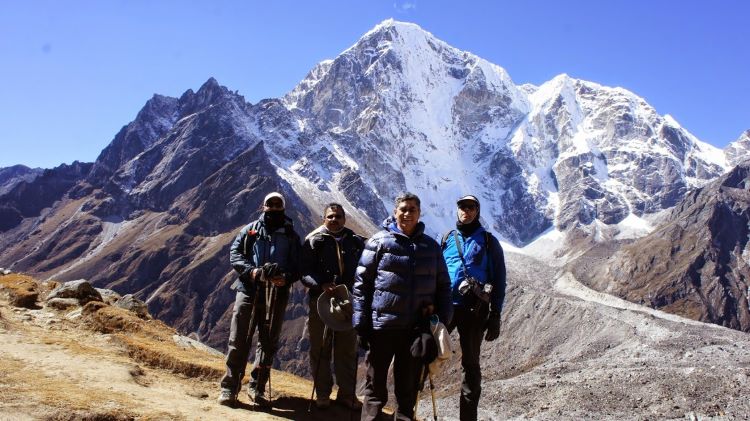
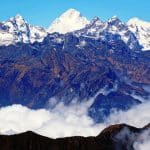 Sunday, July 21st, 2024
Sunday, July 21st, 2024
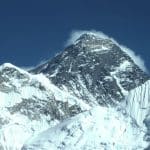 Thursday, June 27th, 2024
Thursday, June 27th, 2024
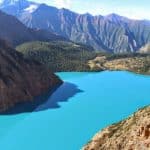 Wednesday, June 26th, 2024
Wednesday, June 26th, 2024
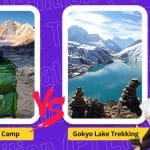 Wednesday, June 12th, 2024
Wednesday, June 12th, 2024
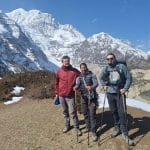 Monday, June 10th, 2024
Monday, June 10th, 2024
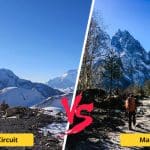 Monday, June 10th, 2024
Monday, June 10th, 2024
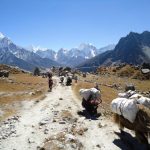 Wednesday, March 27th, 2024
Wednesday, March 27th, 2024
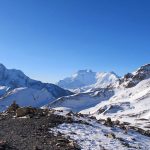 Friday, March 22nd, 2024
Friday, March 22nd, 2024
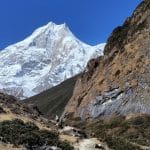 Sunday, February 4th, 2024
Sunday, February 4th, 2024
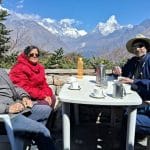 Monday, April 22nd, 2024
Monday, April 22nd, 2024
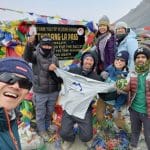 Thursday, May 9th, 2024
Thursday, May 9th, 2024
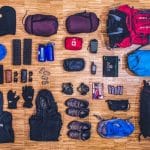 Wednesday, March 6th, 2024
Wednesday, March 6th, 2024
